From The Blog
-
ConnectWise Slash and Grab Flaw Once Again Shows the Value of Input Validation We talk to Huntress About its Impact
Written by Sean KalinichAlthough the news of the infamous ConnectWise flaw which allowed for the creation of admin accounts is a bit cold, it still is one that…Written on Tuesday, 19 March 2024 12:44 in Security Talk Read 609 times Read more...
-
Social Manipulation as a Service – When the Bots on Twitter get their Check marks
Written by Sean KalinichWhen I started DecryptedTech it was to counter all the crap marketing I saw from component makers. I wanted to prove people with a clean…Written on Monday, 04 March 2024 16:17 in Editorials Read 1516 times Read more...
-
To Release or not to Release a PoC or OST That is the Question
Written by Sean KalinichThere is (and always has been) a debate about the ethics and impact of the release of Proof-of-Concept Exploit for an identified vulnerability and Open-Source…Written on Monday, 26 February 2024 13:05 in Security Talk Read 1065 times Read more...
-
There was an Important Lesson Learned in the LockBit Takedown and it was Not About Threat Groups
Written by Sean KalinichIn what could be called a fantastic move, global law enforcement agencies attacked and took down LockBit’s infrastructure. The day of the event was filled…Written on Thursday, 22 February 2024 12:20 in Security Talk Read 1015 times Read more...
-
NetSPI’s Offensive Security Offering Leverages Subject Matter Experts to Enhance Pen Testing
Written by Sean KalinichBlack Hat 2023 Las Vegas. The term offensive security has always been an interesting one for me. On the surface is brings to mind reaching…Written on Tuesday, 12 September 2023 17:05 in Security Talk Read 2084 times Read more...
-
Black Kite Looks to Offer a Better View of Risk in a Rapidly Changing Threat Landscape
Written by Sean KalinichBlack Hat 2023 – Las Vegas. Risk is an interesting subject and has many different meanings to many different people. For the most part Risk…Written on Tuesday, 12 September 2023 14:56 in Security Talk Read 1799 times Read more...
-
Microsoft Finally Reveals how they Believe a Consumer Signing Key was Stollen
Written by Sean KalinichIn May of 2023 a few sensitive accounts reported to Microsoft that their environments appeared to be compromised. Due to the nature of these accounts,…Written on Thursday, 07 September 2023 14:40 in Security Talk Read 2075 times Read more...
-
Mandiant Releases a Detailed Look at the Campaign Targeting Barracuda Email Security Gateways, I Take a Look at What this all Might Mean
Written by Sean KalinichThe recent attack that leveraged a 0-Day vulnerability to compromise a number of Barracuda Email Security Gateway appliances (physical and virtual, but not cloud) was…Written on Wednesday, 30 August 2023 16:09 in Security Talk Read 2056 times Read more...
-
Threat Groups Return to Targeting Developers in Recent Software Supply Chain Attacks
Written by Sean KalinichThere is a topic of conversation that really needs to be talked about in the open. It is the danger of developer systems (personal and…Written on Wednesday, 30 August 2023 13:29 in Security Talk Read 1832 times Read more...
Recent Comments
- Sean, this is a fantastic review of a beautiful game. I do agree with you… Written by Jacob 2023-05-19 14:17:50 Jedi Survivor – The Quick, Dirty, and Limited Spoilers Review
- Great post. Very interesting read but is the reality we are currently facing. Written by JP 2023-05-03 02:33:53 The Dangers of AI; I Think I Have Seen this Movie Before
- I was wondering if you have tested the microphone audio frequency for the Asus HS-1000W? Written by Maciej 2020-12-18 14:09:33 Asus HS-1000W wireless headset impresses us in the lab
- Thanks for review. I appreciate hearing from a real pro as opposed to the blogger… Written by Keith 2019-06-18 04:22:36 The Red Hydrogen One, Possibly One of the Most “misunderstood” Phones Out
- Have yet to see the real impact but in the consumer segment, ryzen series are… Written by sushant 2018-12-23 10:12:12 AMD’s 11-year journey to relevance gets an epic finish.
Most Read
- Microsoft Fail - Start Button Back in Windows 8.1 But No Start Menu Written on Thursday, 30 May 2013 15:33 in News Be the first to comment! Read 116474 times Read more...
- We take a look at the NETGEAR ProSafe WNDAP360 Dual-Band Wireless Access Point Written on Saturday, 07 April 2012 00:17 in Pro Storage and Networking Be the first to comment! Read 87389 times Read more...
- Synology DS1512+ Five-Bay NAS Performance Review Written on Tuesday, 12 June 2012 20:31 in Pro Storage and Networking Be the first to comment! Read 81935 times Read more...
- Gigabyte G1.Sniper M3 Design And Feature Review Written on Sunday, 19 August 2012 22:35 in Enthusiast Motherboards Be the first to comment! Read 80258 times Read more...
- The Asus P8Z77-M Pro Brings Exceptional Performance and Value to the Lab Written on Monday, 23 April 2012 13:02 in Consumer Motherboards Be the first to comment! Read 70889 times Read more...
Displaying items by tag: Tablet
Microsoft Denies Office for iPad Rumor... Well sort of.
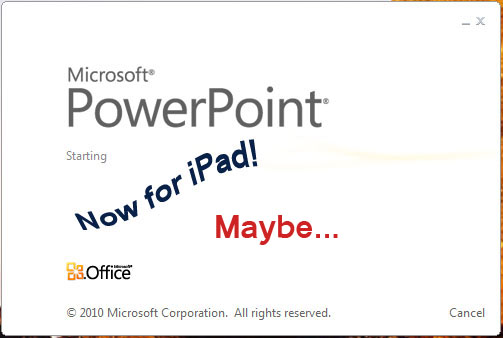 After our initial report of an Office suite from Microsoft developed for Apple’s iPad it seems the company is trying very hard to deny the rumors and speculation, while at the same time leaving their options open. What is the real story? We are not entirely sure, but we are convinced that something is going on that will allow Office functionality on the iPad and other tablets in the works.
After our initial report of an Office suite from Microsoft developed for Apple’s iPad it seems the company is trying very hard to deny the rumors and speculation, while at the same time leaving their options open. What is the real story? We are not entirely sure, but we are convinced that something is going on that will allow Office functionality on the iPad and other tablets in the works.
Windows 8 on ARM will work with Office... 15
 Microsoft has actually come clean on plans for Windows 8 on ARM. It seems that despite some earlier concerns that Microsoft would cripple the OS for non-X86/64 systems it will indeed release Windows 8 with support for Office. However, before you starting thinking about Office 2007 or 2010 on that Windows 8 ARM tablet you might want to know that the Office support will only be in Office 15 (Office 2007 is Version 12 and 2010 is Office 14 Microsoft skipped over Office version 13).
Microsoft has actually come clean on plans for Windows 8 on ARM. It seems that despite some earlier concerns that Microsoft would cripple the OS for non-X86/64 systems it will indeed release Windows 8 with support for Office. However, before you starting thinking about Office 2007 or 2010 on that Windows 8 ARM tablet you might want to know that the Office support will only be in Office 15 (Office 2007 is Version 12 and 2010 is Office 14 Microsoft skipped over Office version 13).
CES 2012 nVidia Press Conference- All about Tablets and Tegra...
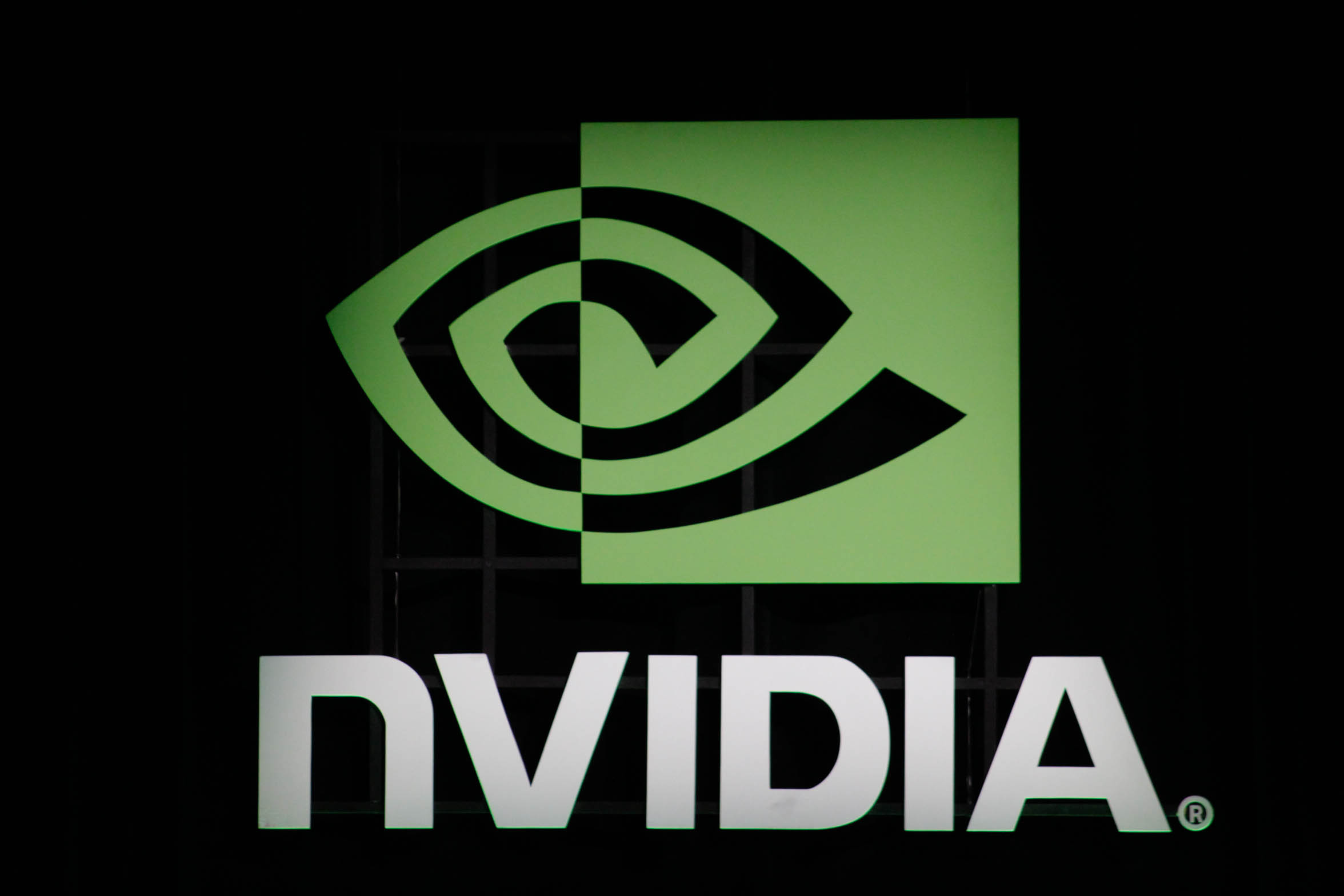 CES 2012 - Las Vegas Nevada; nVidia had their big press conference for CES 2012 and as has been the trend for the last three years it is all about Tegra. This time we had a look at Tegra 3; As most of you know Tegra 3 is nVidia’s Quad/Quint Core SoC and is hitting the market in the form of Asus’ Transformer Prime Tablet. This new SoC (System on Chip) has been seen as the major competitor for Apple’s A6 SoC (although some still feel that the A6 has better and more elegant caching instructions).
CES 2012 - Las Vegas Nevada; nVidia had their big press conference for CES 2012 and as has been the trend for the last three years it is all about Tegra. This time we had a look at Tegra 3; As most of you know Tegra 3 is nVidia’s Quad/Quint Core SoC and is hitting the market in the form of Asus’ Transformer Prime Tablet. This new SoC (System on Chip) has been seen as the major competitor for Apple’s A6 SoC (although some still feel that the A6 has better and more elegant caching instructions).
Obsolete before sale date... The fate of the Tablet.
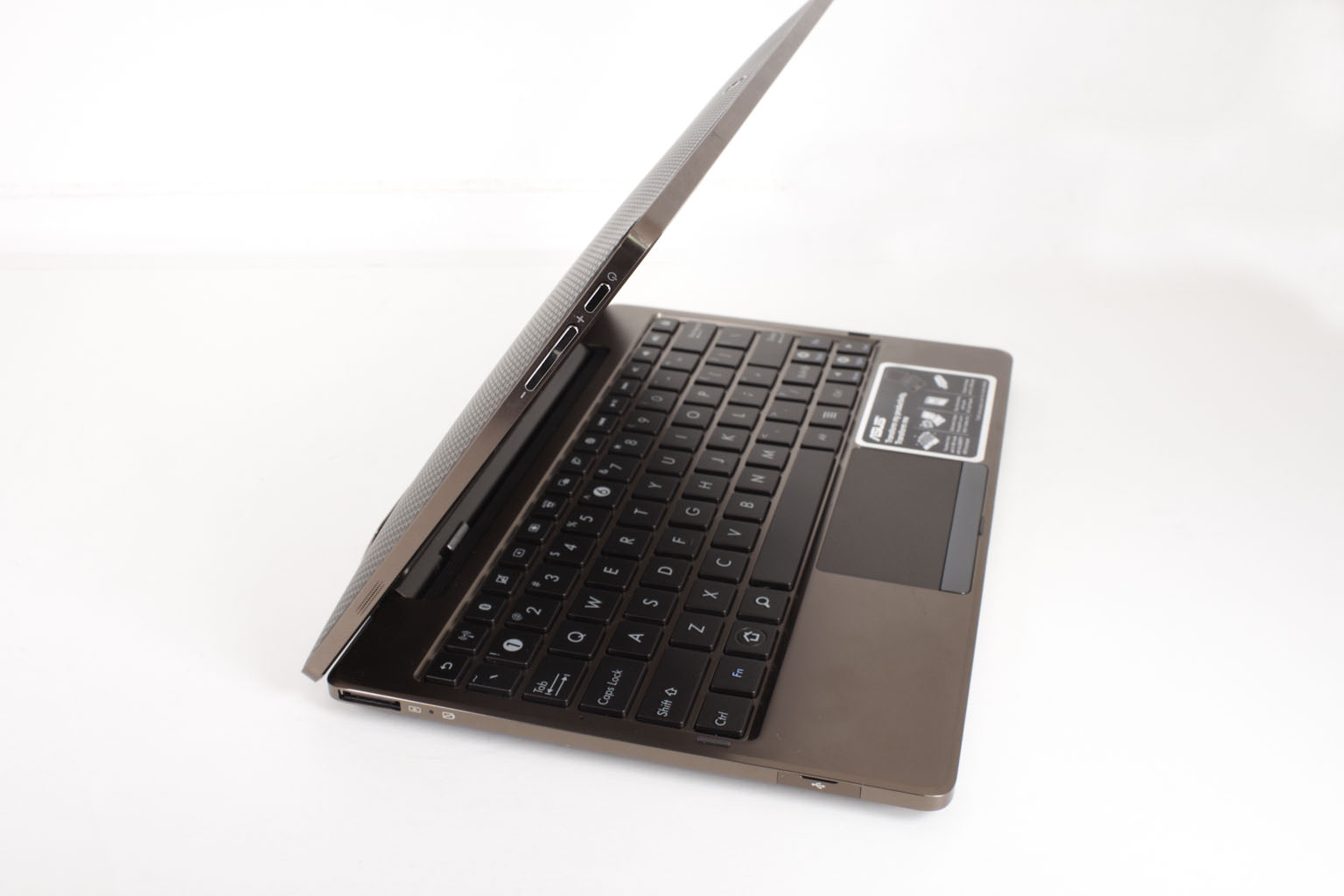 One of the issues in the modern consumer electronics market is of course competition, but it is not the biggest issue. No, believe it or not the biggest issue in the world of consumer electronics is the throw-away mentality for most consumers. Back in the 1950s this problem was visited on the car industry. The automobile makers (in the US) were pushing people to replace their car every two years (yea that is true). This caused many cars to become quickly outdated (in many cases long before their time was really up). By the mid to late 60s the trend had changed because people did not have the money for this and the banks were starting to tighten up on their lending practices. The automotive industry had to change tactics and started pushing longer last vehicles (with better trade in and resale values).
One of the issues in the modern consumer electronics market is of course competition, but it is not the biggest issue. No, believe it or not the biggest issue in the world of consumer electronics is the throw-away mentality for most consumers. Back in the 1950s this problem was visited on the car industry. The automobile makers (in the US) were pushing people to replace their car every two years (yea that is true). This caused many cars to become quickly outdated (in many cases long before their time was really up). By the mid to late 60s the trend had changed because people did not have the money for this and the banks were starting to tighten up on their lending practices. The automotive industry had to change tactics and started pushing longer last vehicles (with better trade in and resale values).
HP to Rlease WebOS to the Open Source Community
 HP appears to be taking a leaf out of AMD’s book; when times get tough, move to the open source community. Now I know that last statement is going to bug people, but just to be clear that is not meant as an insult. It is actually a smart thing to do when you cannot afford to fund research and development on your own; you put it in the hands of the people that are eager to build on the platform. AMD has done this more than once in its recent past and it has paid off for them and in the end the market.
HP appears to be taking a leaf out of AMD’s book; when times get tough, move to the open source community. Now I know that last statement is going to bug people, but just to be clear that is not meant as an insult. It is actually a smart thing to do when you cannot afford to fund research and development on your own; you put it in the hands of the people that are eager to build on the platform. AMD has done this more than once in its recent past and it has paid off for them and in the end the market.
Is an x86 SoC AMD's next move?
 It looks like AMD might be taking a leaf out of HP’s book. According to a report from ZDNet Asia AMD will begin to shift its focus away from the desktop to the server side where the margins are much higher per unit. This latest news plays into some additional rumblings that AMD is getting out of the x86 market (which is not true at all). We have already told you that AMD is planning to shift its consumer line up toward the mobile market where AMD feels they have an advantage over Intel and the Atom.
It looks like AMD might be taking a leaf out of HP’s book. According to a report from ZDNet Asia AMD will begin to shift its focus away from the desktop to the server side where the margins are much higher per unit. This latest news plays into some additional rumblings that AMD is getting out of the x86 market (which is not true at all). We have already told you that AMD is planning to shift its consumer line up toward the mobile market where AMD feels they have an advantage over Intel and the Atom.
Ice Cream Snadwich will help bring Developers to Android
 There has been a lot of talk recently about the vast difference between the number of Android tablets on the market (around 6 million) and the number of iPad devices (about 30 million). There have been multiple excuses, causes and items to blame for this difference, but one that has been overlooked at almost every level is simply time. The original iPad launched in April of 2010 by comparison the first Android tables (of comparable size) did not hit the market until early 2011. Yes there were 7-inch tablets and even some terrible ones running Android 2.0 that were 10-inch but most of these were very short lived. By comparison the first real Android tablets running Honey Comb (Android 3.0) were not launched until around February/ March 2011. This put them in the market at the same time the iPad 2 was being delivered. Now, if you think that this did not impact sales you are seriously deluded. People are always going to go with what they know and trust. At the same time that the iPad 2 was selling out there was also a large number of iPads hitting the second hand markets (eBay, Craig’s List etc.). This only continued the cycle as people were looking to get these devices from former owners. The next thing that Apple did right was to push these to Target and WalMart. That put them in line with the “price conscious” consumer. After all, if you can buy it at WalMart it must be a good deal right?
There has been a lot of talk recently about the vast difference between the number of Android tablets on the market (around 6 million) and the number of iPad devices (about 30 million). There have been multiple excuses, causes and items to blame for this difference, but one that has been overlooked at almost every level is simply time. The original iPad launched in April of 2010 by comparison the first Android tables (of comparable size) did not hit the market until early 2011. Yes there were 7-inch tablets and even some terrible ones running Android 2.0 that were 10-inch but most of these were very short lived. By comparison the first real Android tablets running Honey Comb (Android 3.0) were not launched until around February/ March 2011. This put them in the market at the same time the iPad 2 was being delivered. Now, if you think that this did not impact sales you are seriously deluded. People are always going to go with what they know and trust. At the same time that the iPad 2 was selling out there was also a large number of iPads hitting the second hand markets (eBay, Craig’s List etc.). This only continued the cycle as people were looking to get these devices from former owners. The next thing that Apple did right was to push these to Target and WalMart. That put them in line with the “price conscious” consumer. After all, if you can buy it at WalMart it must be a good deal right?
So with over a year head start, better marketing and a firm foot hold in the consumer’s mind Apple now has a 24 million unit lead on the Android Tablet. But, let’s look at where the Android Tablet is in reality. In only 6.5 months Android Tablets have managed to carve a 6 million unit hole into what was once Apple’s own playground. This is pretty impressive considering Apple claims that Android is inferior and that their OS is fragmented. If you doubt that Apple is concerned about the sudden success of the Android Tablet, just look at the number of lawsuits in progress where Apple is asking for an outright ban instead of monetary compensation. That above all is a big indicator of their mindset.
But what has really gotten Apple so bothered about this? After all it will take years (probably 2-3 just like the iPhone) for the Android tablet to overtake the iPad so why is Apple trying so hard to kill them now? To put things simply, Apple has a problem with iOS. There are two of them that have to be maintained. The iOS for the iPad is not the same as the iOS for the iPhone. For a developer this is a nightmare as they have to write two versions of their app if they want to cover both products. This is a headache to say the least. With Android and their tile based UI there is no reason to write for more than one screen size and this is with Android 2.3 and 3.0. When Ice Cream Sandwich(ICS) hits the market the division will be almost nonexistent. A developer will be able to write one app and not worry about different screen sizes or versions. This will be huge (right up there with Android’s full support of Flash) and could be an item that will lure some developers away from the Apple camp.
Of course this is not an indication that Developers will leave en masse especially with the fear of being locked out of Apple’s walled garden. It is an indication that more developers are likely to work with Android as the ROI (Return on Investment) is going to be much higher than what they will get doing double the work for Apple.
Although the convergence of ICS on the Android Based tablet is a step in the right direction, there is still a lot that Google has to do to grab a larger market share. They have to find a way to wall off certain apps for the average consumer while still allowing the freedom to explore to the more technical. I have talked to more than a few people about this and there are major concerns with owning an Android tablet. Most of these have to do with the type of content and the danger of malware in the Market. Until this can be dealt with it is doubtful that a larger number of people will shift from the safety of Apple’s iTunes garden and enter the jungle that is present in the Market. Google also has to worry about Microsoft entering the ARM based tablet market sometime in late 2012 or early 2013. Personally I think that we will not see a larger adoption of Android tablets until ICS is in full swing. Once that happens and people see what they can have and do versus what they cannot do with the iPad and iPhone things will change.
Discuss in our Forum
Microsoft Trying Another Ploy to Save Windows Phone
 We have talked about this one over and over and over (is my face getting a little blue?). Microsoft just does not get the market they are trying to sell to any more. Don’t get me wrong, I like Windows 7 and their new server stuff is fantastic (we will be covering a lot of that very soon), however when it comes to putting out hardware or even assisting in hardware production they are clueless. This is doubly true for their mobile division. So far we have heard them put down both Apple and Google saying their products are immature and chaotic respectively. Then we heard Andy Lees (the guy in charge of the Windows Phone Division) comment that the iPhone 4S was a wasted opportunity and that talking to a phone was not productive… I think one of the PR guys needs to pull Andy aside and ask him not to talk quite so much.
We have talked about this one over and over and over (is my face getting a little blue?). Microsoft just does not get the market they are trying to sell to any more. Don’t get me wrong, I like Windows 7 and their new server stuff is fantastic (we will be covering a lot of that very soon), however when it comes to putting out hardware or even assisting in hardware production they are clueless. This is doubly true for their mobile division. So far we have heard them put down both Apple and Google saying their products are immature and chaotic respectively. Then we heard Andy Lees (the guy in charge of the Windows Phone Division) comment that the iPhone 4S was a wasted opportunity and that talking to a phone was not productive… I think one of the PR guys needs to pull Andy aside and ask him not to talk quite so much.
Even beyond Andy putting his foot in his mouth on occasion we now have Steve Ballmer telling us what we should want in a phone OS. His last comments on Mango and in turn the MetroUI were almost pleading in their attempt to get the market (and the consumer) to understand that giant square tiles are a good thing. Guys, they are not. We tried them here at DecryptedTech and they just did not work; just like they are not going to work for Microsoft.
Now, Microsoft has run out of ideas and quite possibly time. They are going to attempt to get the manufacturing cost below $200. Oddly enough this announcement came only a day or two after it was discovered that the iPhone 4S had around $188 in hardware inside its housing. While this will make the devices less expensive to make, and in turn should make them cheaper to buy that will not spell success. You have to not only have a compelling product (which they don’t) but also know how to market it (which they do not). On top of all that you have to offer an infrastructure to support it that makes sense and that people want to use (sorry third strike there Microsoft).
Mr. Ballmer, if you do not believe me about cheaper does not win the market; just take a look at Android tablet sales. In many cases they are $100 less expensive and yet the market still keeps buying the iPad… this is despite better hardware too. In the end you have to have two (no three), Ok three things.
1 a compelling product (not great or even that innovative, just compelling)
2 a great marketing team that knows its stuff and can give the product its own image
3 A legal team to fight off the ones over at Apple.
Picture Credit AllThingsD
Discuss in our Forum
Why Apple is Important to the Industry
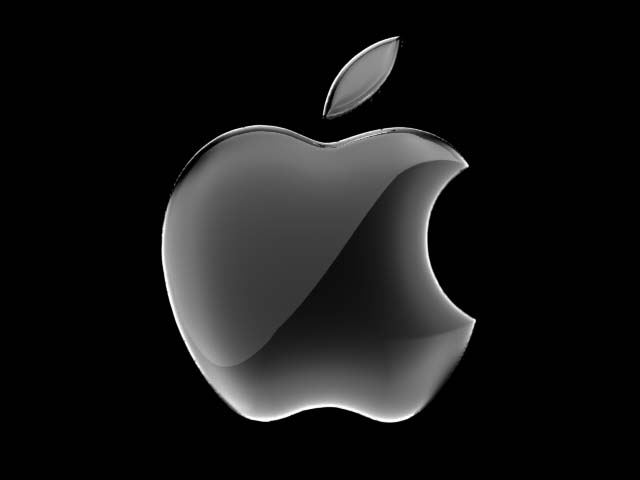 In talking about Apple (and SIri) over the last couple of days I started to think about what Apple does that is “right”. I know that most of the media and many consumers view almost any Apple product as glorious and Apple can do no wrong. While that is not true there is something important in that mindset and it finally dawned on me why Apple is vital to the future of the computer industry. It is not because they make amazing products with quality second to none.
In talking about Apple (and SIri) over the last couple of days I started to think about what Apple does that is “right”. I know that most of the media and many consumers view almost any Apple product as glorious and Apple can do no wrong. While that is not true there is something important in that mindset and it finally dawned on me why Apple is vital to the future of the computer industry. It is not because they make amazing products with quality second to none.
The fact is they make good products with the same quality as everyone else. If you did not know already every iPhone, iPod and Mac is made by Foxconn over in China. The line that assembles these is very close to the line that builds HP, Dell and others (at least they were the last time I checked). This means that the same level of build quality is present in all of those devices. If you are getting an Apple product there is not some magical line that makes their devices better. The same can be said for the components inside. The A4 and the original A5 found in the iPad2 was not manufactured by Apple it was made by Samsung (which makes the lawsuits very interesting and is another case of Apple biting the hand the fed them). The more recent ones (after April 2011) have been made by TSMC. These are the same guys that make nVidia and AMD GPUs as well as many other ARM processors. Again there is nothing that makes Apple product magically better using either of these companies.
No it is not Apple’s hardware that makes them vital to the tech world. It is also not their software. True the iOS is fast and nimble, just like OSX is. However, it is fast and nimble on a very narrow hardware group. If you take it outside that and manage to get different hardware to work you will find that it is not so quick. 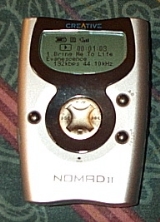
In short terms the thing that makes Apple crucial and an amazing company is this; No one can sell a product like Apple. You just cannot do it. All you have to do is look back at recent history to see what I mean. For example, let’s take the MP3 player. Long before the first iPod hit there was an MP3 Player from Creative called Nomad that pretty much kicked things off. Many other companies came along and put out MP3 players at the same time, even D-Link had one. 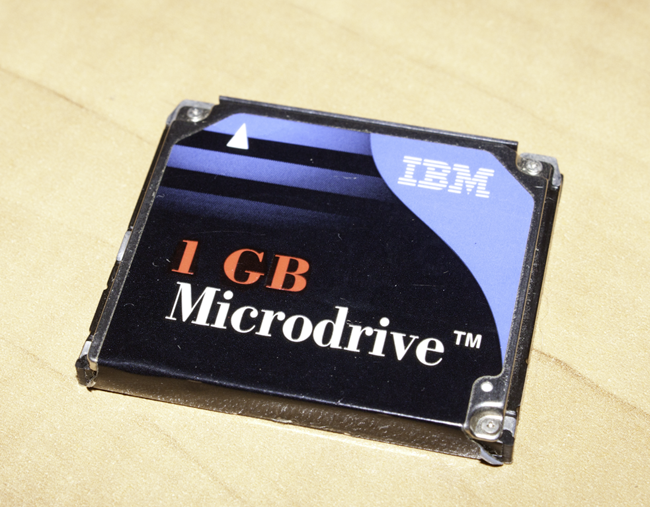
In fact the MP3 player looked like it was going to fade away when Apple released the iPod with a new device inside, the Micro Drive from IBM (and later Fujitsu). This meant that while other companies were pushing 16, 32 and 128 MB (yes Megabyte) Apple could put 1-2 GB and more space in their products. Later as these drives grew (and the advent of the 1.8-inch drive) the size of the iPod grew while other companies were barely getting by with the smaller amounts of flash memory. Apple’s product was not all that better, it was primitive with basic controls but it was good looking and offered more from the consumer’s point of view. This was even more true when you combined iTunes and the $0.99 song. Apple showed people that they wanted this product. The iPod became a synonym for MP3 player. You can follow this chain through the iPhone and the iPad. On the day the iPhone launched there were more sophisticated phones and phones with better support. However, the iPhone caught the consumer’s imagination. Suddenly they wanted these products. A touch screen phone? With icons. Wow. Of course there had been touch screen Windows Mobile phones and Palm based phones for years before. Still the smart phone market as an entertainment and business tool did not take off until Apple launched the iPhone. It is the same story with the iPad and now Natural Voice Command. Both of these products have been out for a long time, but Apple has been able to make people WANT them.
So you can criticize Apple for their xenophobic ways, their controlling nature, their reprehensible patent policies and legal team (I know I will). In the same breath, anyone in the tech industry should also be thanking them. Without Apple, so many of the cool toys that we love and want would never survive in the market. We might also still have nothing more than boxy and bulky laptops right next to those terrible unstylish off-white cases that were so popular…
Think about it.
Discuss in our Forum
Google's Ice Cream Sandwich is Looking Very Tasty
 Google’s Ice Cream Sandwich has finally been launched. This new version of Android which will officially be Android 4.0 is supposed to not only bring new features to the table, but it also going to address some items that have been lacking on Android. According to many sources this new version of Android will touch every native app in some way. We can only hope they did something to improve the poor email app that currently is in Honeycomb, but we will have to see about that once the update is available for our Transformer.
Google’s Ice Cream Sandwich has finally been launched. This new version of Android which will officially be Android 4.0 is supposed to not only bring new features to the table, but it also going to address some items that have been lacking on Android. According to many sources this new version of Android will touch every native app in some way. We can only hope they did something to improve the poor email app that currently is in Honeycomb, but we will have to see about that once the update is available for our Transformer.
Aside from the updates to all of the native apps we are hearing that there will be some very cool new features including a facial recognition lock. This will allow you to use the built in front facing camera to interrogate your face and compare it to an image stored on the device. If it matches you can access the device, if not; well you can figure that one out on your own. Android 4.0 will also feature a new NFC-enabled feature called Android Beam. This will allow you simply tap two phones or devices together to share files, links and other information. Google is saying that this is being designed to work with a number of app that are already in the market so you won’t have to wait long to start bumping phones.
Next up is an overhaul of the camera app. This is also a very welcome feature as the current default one is very immature. With the new interface you can access the camera right from the lock screen (if you choose to). You also FINALLY get a zero shutter lag in a mobile phone camera, this combines with the continuous focus and face detection. Android is also adding touch to focus and exposure lock. These are features that many phone makers have tacked on (like HTC) but are now showing up in the native app as well. Android did not stop with the Camera though, you also get some nice new features in the gallery including filters and a built in Photo Editing app which allows you to make changes and still maintain the original file for later tinkering.
We are sure there is a lot more to Android 4.0 that we are missing in our roaming around the net, but you can be sure we will be taking it for a test drive and comparing it to what you get with Apple’s new iOS 5 just to see if Android is lagging behind or actually catching up. If it is the latter then we can see the Android Tablet market picking up, especially with the Holidays coming up quickly.
Source All Over the Internet
Discuss in our Forum
